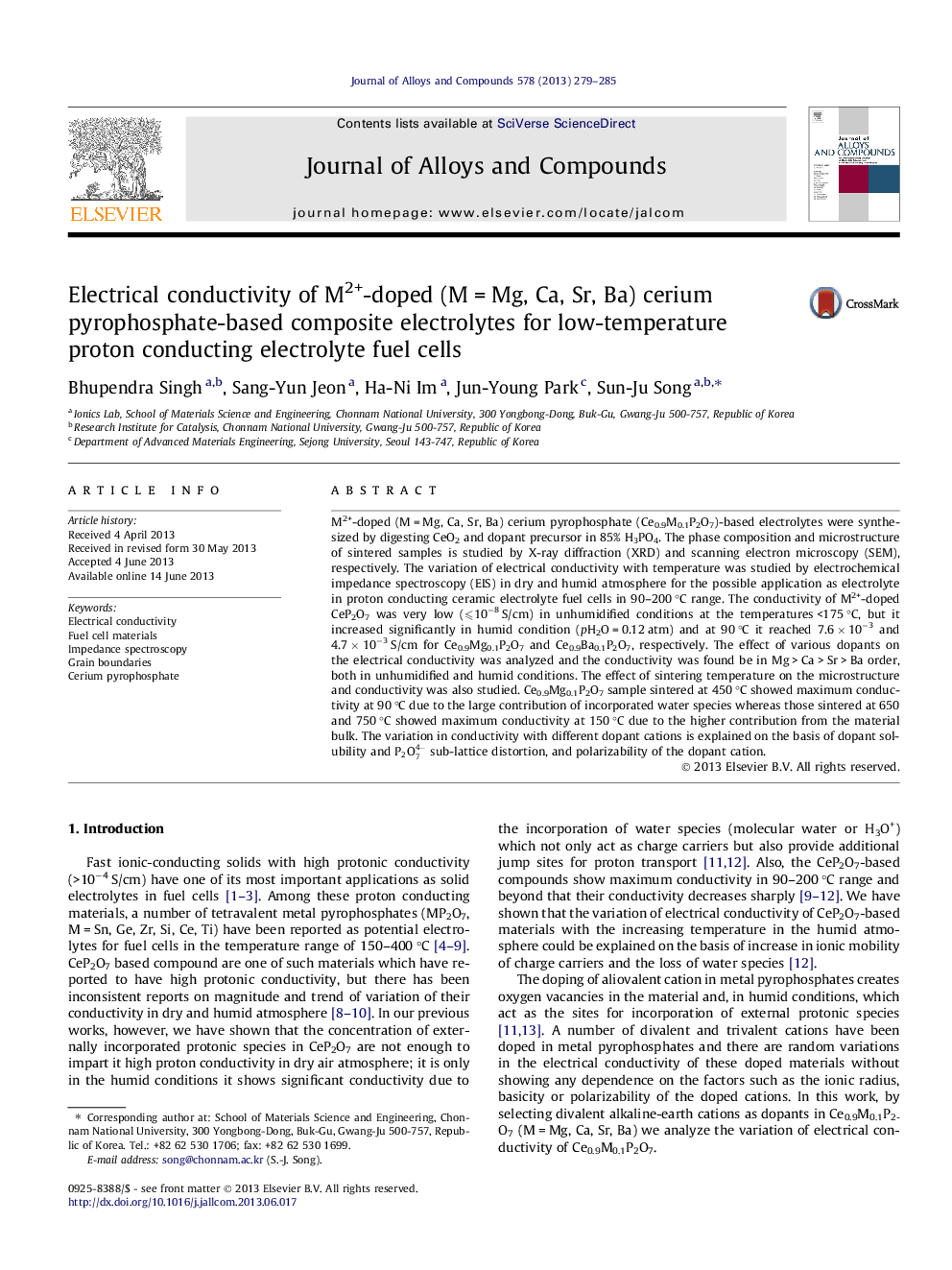| Article ID | Journal | Published Year | Pages | File Type |
|---|---|---|---|---|
| 1613686 | Journal of Alloys and Compounds | 2013 | 7 Pages |
•Electrical conductivity of Ce0.9M0.1P2O7 (M = Mg, Ca, Sr, Ba) was analyzed.•Effect of dopant was explained on the basis of its solubility and polarizability.•Effect of sintering of thermally unstable Ce0.9M0.1P2O7 was discussed.
M2+-doped (M = Mg, Ca, Sr, Ba) cerium pyrophosphate (Ce0.9M0.1P2O7)-based electrolytes were synthesized by digesting CeO2 and dopant precursor in 85% H3PO4. The phase composition and microstructure of sintered samples is studied by X-ray diffraction (XRD) and scanning electron microscopy (SEM), respectively. The variation of electrical conductivity with temperature was studied by electrochemical impedance spectroscopy (EIS) in dry and humid atmosphere for the possible application as electrolyte in proton conducting ceramic electrolyte fuel cells in 90–200 °C range. The conductivity of M2+-doped CeP2O7 was very low (⩽10−8 S/cm) in unhumidified conditions at the temperatures <175 °C, but it increased significantly in humid condition (pH2O = 0.12 atm) and at 90 °C it reached 7.6 × 10−3 and 4.7 × 10−3 S/cm for Ce0.9Mg0.1P2O7 and Ce0.9Ba0.1P2O7, respectively. The effect of various dopants on the electrical conductivity was analyzed and the conductivity was found be in Mg > Ca > Sr > Ba order, both in unhumidified and humid conditions. The effect of sintering temperature on the microstructure and conductivity was also studied. Ce0.9Mg0.1P2O7 sample sintered at 450 °C showed maximum conductivity at 90 °C due to the large contribution of incorporated water species whereas those sintered at 650 and 750 °C showed maximum conductivity at 150 °C due to the higher contribution from the material bulk. The variation in conductivity with different dopant cations is explained on the basis of dopant solubility and P2O74- sub-lattice distortion, and polarizability of the dopant cation.
